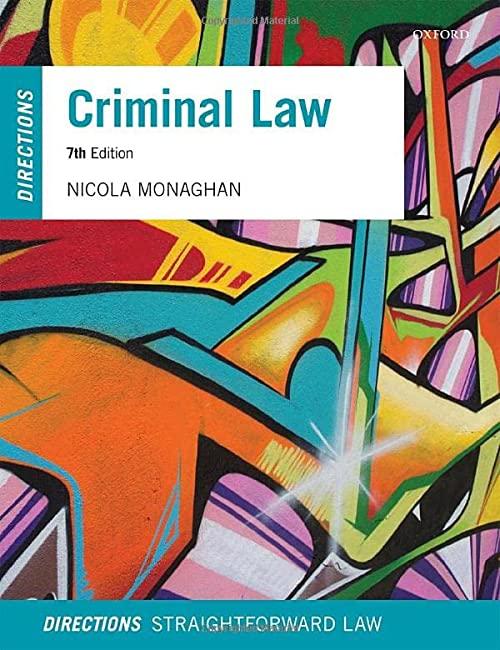Question
What are 5-7 sources (may include but are not limited to statutes, ordinances, cases, legal encyclopedias) that can be used in reference to the following
What are 5-7 sources (may include but are not limited to statutes, ordinances, cases, legal encyclopedias) that can be used in reference to the following scenario
In the U.S., the legal rights of gays and lesbians have come to the forefront in recent years, particularly due to the increased number of U.S. states that had made same-sex marriage legal, culminating in the U.S. Supreme Court's decision on June 26, 2015, which legalized same-sex marriage for the entire nation. Despite same-sex marriage being legal nationwide, there are no federal statutes that explicitly protect against workplace harassment and discrimination on the basis of sexual orientation. Because there is no federal statute making workplace harassment or employment-related decisions such as hiring or firing on the basis of sexual orientation explicitly illegal (e.g., sexual orientation is not a protected class under Title VII like gender or race is), you must look to state law, local law, and indirect ways that clients might sue their former employers because of workplace decisions the client believes were made on the basis of his or her sexual orientation. For instance, the EEOC has held that workplace discrimination based on sexual orientation is discrimination on the basis of sex/gender (one of the five protected classes under Title VII), and thus violates Title VII (Baldwin v. Dep't of Transportation, EEOC Appeal No. 00120133080).
Step by Step Solution
There are 3 Steps involved in it
Step: 1

Get Instant Access to Expert-Tailored Solutions
See step-by-step solutions with expert insights and AI powered tools for academic success
Step: 2

Step: 3

Ace Your Homework with AI
Get the answers you need in no time with our AI-driven, step-by-step assistance
Get Started


